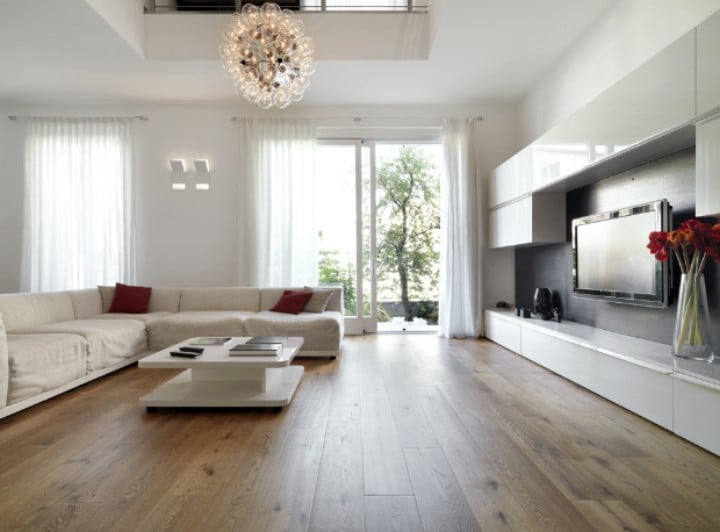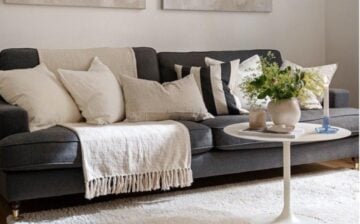
Are you feeling overwhelmed with the thought of moving house and having to tackle interior design? Don’t despair; we have some helpful tips on how to approach interior design when relocating so that you can create your ideal home. You can feel confident in your approach and make the transition as stress-free as possible.
Here are some tips to help you get started:
Set Your Goals for the New Space
Regardless of whether you plan to do the interior design of your new house yourself or enlist the help of an interior design company, it’s important that you set some clear goals at the outset. Take some time to determine what style you’re after and how it should reflect your personality and lifestyle. You should also consider practical needs such as lighting and space, as well as budget limitations.
Creating a mood board with images that capture the feeling you want to create can be a good starting point for any home renovation project. You can use this board to guide your decisions in terms of furniture, accessories and wall art. Even if you are hiring a professional designer, many companies like to have an idea of which style the home owner is going for before making any decisions together on materials, paint colors and more.
Knowing what you want from a home renovation project helps ensure that both you and an interior design company are on the same page when it comes time for them to create your dream design plan that meets both aesthetic and practical needs.
Assess Your Current Furniture and Decor
Whether you are downsizing, upsizing, starting out, or just ready for a change, moving house is a chance to create a completely new look. A great place to start is by assessing what furniture and decor you currently have and determine what things (if any) should come with you to the new home. Ask yourself:
- What pieces do I still love?
- What pieces could be repurposed in the new space?
- Do I know where I can buy new furniture or decor accessories to complete my vision for the room?
- What finishes and colors will help set the tone for each space?
It’s helpful to make inventory lists of everything that needs to be moved so that you can plan out how these items will fit into your new home. Remember –you don’t need to keep everything–so take some time researching affordable options for replacing furniture or decor if needed. Furthermore, being aware of potential pitfalls in terms of measurements and functional restrictions can also save potential headaches down the road. By taking stock of your current items first, it can allow you breathing room when preparing your redesign plan and budget.
Consider Your Budget and Timeline
When approaching the task of interior design when moving house, it is important to consider both your budget and timeline. Patrick Lee from Pro Interior Designer advises that it is easy to get carried away with designing ideas, but having a precise budget and timeline can help you focus on what needs to be done first.
After estimating your expenses, create a plan for the order in which each task should be completed. Then evaluate where you need to make compromises in order to stick within your budget and complete your project on time.
It is also important to look ahead and visualize how each change you make now will fit into the overall system of the house later on. You may find that it is best to wait before investing in certain projects so that additional changes can be made at once when those items become available or when more money has been allocated for them. This way, you will get the desired outcome without unnecessary costs incurred from mistakes or multiple do-overs.
Think About the Function of Each Room
Before you start rearranging furniture or choosing fabric for curtains and cushions, it’s important to think about the purpose of each room in your new home. For example, do you need a dedicated dining space? Or perhaps a second living room for adults so the kids can have their own area? Also consider how you use each space and how that might change over time. It’s possible, for instance, that your future needs may not fit into the existing layout of the house.
Once you’ve established the function of each room, you can start to look at which pieces and patterns will best complement them. You should also take into account any features that will stay in the home – whether they be structural elements like wood-beamed ceilings or mock fireplaces, or more tactile pieces like carpets and lights. These items are often difficult to change without major remodeling work – but they can heavily influence the design outcomes you achieve in each space. Consider their size and shape carefully when planning a new interior design scheme – taking note of any texture or color theme that needs to be included – to avoid having too many competing elements within one room.
Finally – remember that a successful interior design project is all about achieving balance through thoughtful experimentation with furniture placement and accessories – including color-blocked walls and sculptural art pieces as well as traditional carpets and wallpaper combinations. Be prepared to put some effort into finding just the right designs for your new home and enjoy the process along way!
Explore Different Interior Design Styles
When beginning the process of interior designing for a new space, it’s important to acknowledge and explore different design styles. By doing so, you can narrow down the options and decide which style best suits your household. Design styles can vary greatly based on one’s preference and what type of atmosphere they would like to create in their home.
The popular styles available today are:
- Traditional
- Transitional
- Contemporary
- Global-inspired
- Rustic/country-inspired
- Midcentury modern
- Coastal
Each style has its own unique characteristics that make it distinct from another such as furniture pieces used; color palette used; material choices made as well as elements related to comfortability/ergonomics/accessibility incorporated into the design plan. Before committing to a particular design style, do some research exploring each individual category to fully understand them.
Once you decide on a particular style for your home, this becomes the foundation for everything you want your home to become—the philosophy behind the space and guiding principle for implementation of interior design decisions.
Choose a Color Palette and Overall Theme
One of the key elements to consider when you’re starting to plan your interior design is the color palette and overall theme that you want to work with. Creating a color palette helps ensure that all of the furnishings and decorations in the room help create a cohesive look. It’s also important to consider how exploring any existing architecture might fit into your home décor.
When selecting a color palette, focus on two or three colors that compliment each other, and make sure those colors appear throughout the space in different ways. With these two or three colors, you can begin to refine your style with accents and features specific to a certain area of interest.
Depending on where you live, there may be regional trends for more traditional or contemporary themes; be sure to invest time in researching local cultures and regional trends before making a decision about which one will work best for your space. For example, Scandinavian style is popular in Northern Europe while Mid-century Modern furnishing is often seen in California. Additionally, luxury styles like Hollywood Glamor may appeal more to those living in big cities like New York City or London.
Once you’ve decided on looks or themes that are appealing to both you and any other housemates involved, it’s easier move forward choosing furniture pieces and décor items that contribute towards your overall style vision for the space.
Measure Your Space and Create a Floor Plan
Moving house is an exciting yet challenging time. You have big decisions to make in regards to interior design, but first you need to fully comprehend the layout of your new space by taking detailed measurements and creating a floor plan.
Before you start buying furniture, measure every wall and room to create an accurate layout of the space. Knowing exact dimensions beforehand can save back-and-forth trips to the store or numerous online returns if furniture doesn’t fit. Measure doorways, window frames and hallways so that you don’t purchase a bulky piece that won’t fit inside the home on moving day.
Use graph paper or a professional design software program to sketch out possible living room configurations including seating, TV placement and side tables. Once you have confirmed measurements for movement within each room and any access points for getting furniture delivered into the house, you can start furnishing your new home with confidence.
Select Furniture and Decor That Fits Your Needs
No matter how small or large your new home is, selecting a combination of furniture and decor that works for you can be a daunting task. Before you start shopping, it’s important to assess your lifestyle, needs and aesthetic preferences. This will help you decide what type of furniture will work best for your space, as well as the materials that will complement the overall look and feel of your home.
Think about how often family or friends come over and if they need to be accommodated when selecting furniture. Do you want comfortable seating with added storage space? Would a seating area in the bedroom provide an airy allure? Is an island countertop necessary in the kitchen? These considerations will help determine what type of furniture pieces are appropriate for each room. Similarly, opt for pieces that offer smaller footprints when furnishing limited square footage – such as dining-room tables with removable leaves or chairs that can be stacked away when not in use.
To add personality and visual interest to any room, try incorporating decorative accents such as rugs and curtains that match your furnishings and appoint any bare walls with art or wall decor to instantly enhance the look without cluttering up valuable floor space. Placing collections on shelves also creates curated character in any living space while emphasizing a particular theme. In addition, incorporate natural elements like plants and greenery around every room to complete a revitalizing atmosphere with air purifying benefits – making it not only aesthetically pleasing but healthy too!
Add Personal Touches and Decorative Accents
One of the most exciting parts of moving into a new home is getting to decorate it, so that you feel at home. Of course, take some time to consider the layout of your furniture and accessories, when making decisions. However, don’t forget to add personal touches and decorative accents to really make it yours.
Think about adding natural elements, such as wooden furniture or plants throughout each room. These will bring life and energy into your home, while connecting you with nature. You can also hang artwork or place items with sentimental value on tabletops and shelves. Anything that helps you remember fond memories or cherished moments would be suitable here!
You can opt for bright colors when furnishing your new place as they provide a more vibrant atmosphere. However, color-coordinated furniture will give an upgraded harmonious feel to the overall look of your space – especially if it follows a general palette like black & white.
If you’re feeling extra creative and want something one-of-a-kind for your living space, handmade decorations are also a great choice! Knit blankets or cushions crafted from fabric can be used as stylish accents throughout the house. Additionally, rustic décor can be created from tin cans or jars – just get creative!
Don’t Forget About Lighting and Finishing Touches
Creating a beautiful, comfortable home doesn’t have to be stressful. When you move into a new house you can use it as an opportunity to start fresh and create the home of your dreams, without breaking the bank.
Lighting and finishing touches are often overlooked when it comes to interior design, but these elements can truly make or break a room. Fixtures like floor lamps and overhead lighting should be chosen with purpose to create a pleasant ambiance in the space. Don’t forget about how natural light affects the overall look and feel of your home; strategically placed curtains, blinds, and window treatments can help keep things from getting too bright or too dark during certain times of day.
Accessories and decorative pieces are another great way to finish off any room in your house. Strategically placed items like throws, wall hangings, mirrors, vases, plants or other small furniture can add flavor without overwhelming the space. Finally, don’t forget about rugs and floor coverings! If you have hardwood or tile floors they can often benefit from an area rug that adds color and warmth.
Avoid going overboard with both furniture placement and decorations; less is more when it comes to interior design! Choosing the right pieces for your space will ensure that your house looks stylish but also remains comfortable for day-to-day living.
Final Thoughts
Moving house can be a stressful time, but it is also an opportunity to personalize and make the new house your own. With thoughtful planning, the right materials and colors, you can create room designs that make your house both inviting and functional.
Remember that design should be a reflection of you and your family. While sleek modern styles are great in some spaces, blending different eras with unique finds from antique stores or markets adds character to your house. It’s important to work within your budget when upgrading furnishing and fixtures. Consider purchasing one standout piece from a quality brand – it will likely last longer and be more timeless than replicating trends on the high street.
Try to celebrate the existing features of the house like fireplaces or original wood flooring instead of hiding them away behind carpets or wall hangings. Additionally, if you have outdoor spaces, think about designing them as an extension of the interior where conversations can flow between inside and out. By making careful choices while considering both traditional style as well as embracing modern design ideas, you will end up creating living spaces that truly reflect you!
We hope you found this blog post on How To Approach Interior Design when Moving House, useful. Be sure to check out our post on Tips on How to Become a Pro in Interior Design for more great tips!
Have Experience in the Moving Industry? Want an Additional Income Stream? Work With All Around Moving!
Partner with us and we’ll help you make money by establishing your own moving consultant business. Click here to learn more.





